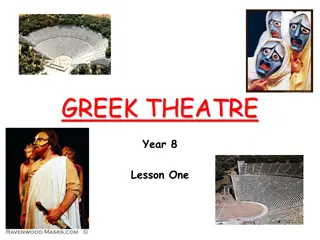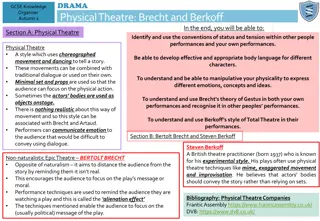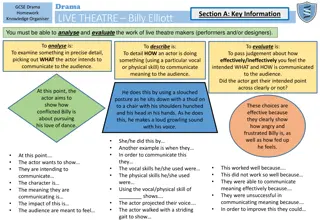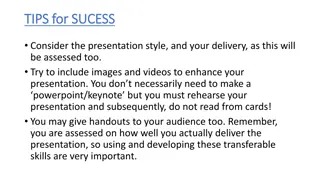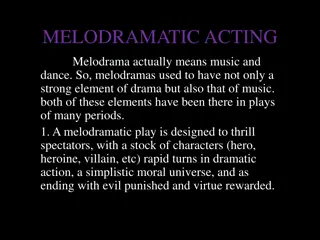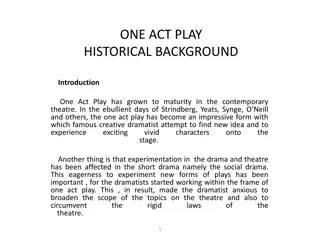Exploring the Fascinating World of Kabuki Japanese Theatre
Delve into the colorful history and captivating elements of Kabuki theatre, from its origins as a solo dance form to the elaborate costumes, makeup, and dramatic performances. Discover the traditional characters, unique storytelling techniques, and immersive experiences of this renowned art form that continues to enthrall audiences worldwide.
Download Presentation

Please find below an Image/Link to download the presentation.
The content on the website is provided AS IS for your information and personal use only. It may not be sold, licensed, or shared on other websites without obtaining consent from the author. Download presentation by click this link. If you encounter any issues during the download, it is possible that the publisher has removed the file from their server.
E N D
Presentation Transcript
Kabuki Japanese Theatre
The Beginnings The word Kabuki comes from the Japanese verb kabuku which means out of the ordinary or bizarre. Kabuki began between 1603 and 1868 Began as a solo dance by 1 female performer. In 1629 women performers were outlawed. Kabuki today is Yaro- Kabuki, or Kabuki performed by male actors. Over the years Kabuki play structure has changed from one dance to a 5 act plot structure.
The Elements Plot (Melodramatic) Spectacle (costumes, makeup, sound, scenery, special effects) Sword Fights Mystical Creatures
Traditional Characters Onnagata- Female roles, played by men. Tachiyaku- Brave Hero characters, young adult males. Katakiyaku- Mean villain characters. Koyaku- Children Most Kabuki actors will learn about all the acting styles but specialize in one specific role. Fame for Kabuki actors will often pass down from father to son.
Miyabi-ya The next 4 clips are from a Kabuki production that was at the 2016 Japan Fest. In this story there is an older Lion and his son. The father, feeling it is time the son grows up, pushes his son down into a ravine. The son faces multiple challenges orchestrated by his father, in order to prove his strength and maturity. After defeating the obstacles the father and son achieve a mutual respect.
The Female Characters Female Characters are still portrayed by men in Kabuki Theatre. Because the portrayal of women is from the male prospective, the female movements are very stylized. In Kabuki there is certainly a correct way to move like a lady. The following is a clip from a Kabuki dance of a Onnagata.
Compare and Contrast Turn to the next page in your packet. Compare and contrast the elements you noticed about each type of character. This could be their costume, movements and/ or characterization. Look back at the notes you took if you need ideas of elements to put in your Venn- Diagram. You need at least 1 observation in section and then 5 more in any section. This totals 12 observations in your diagram.







